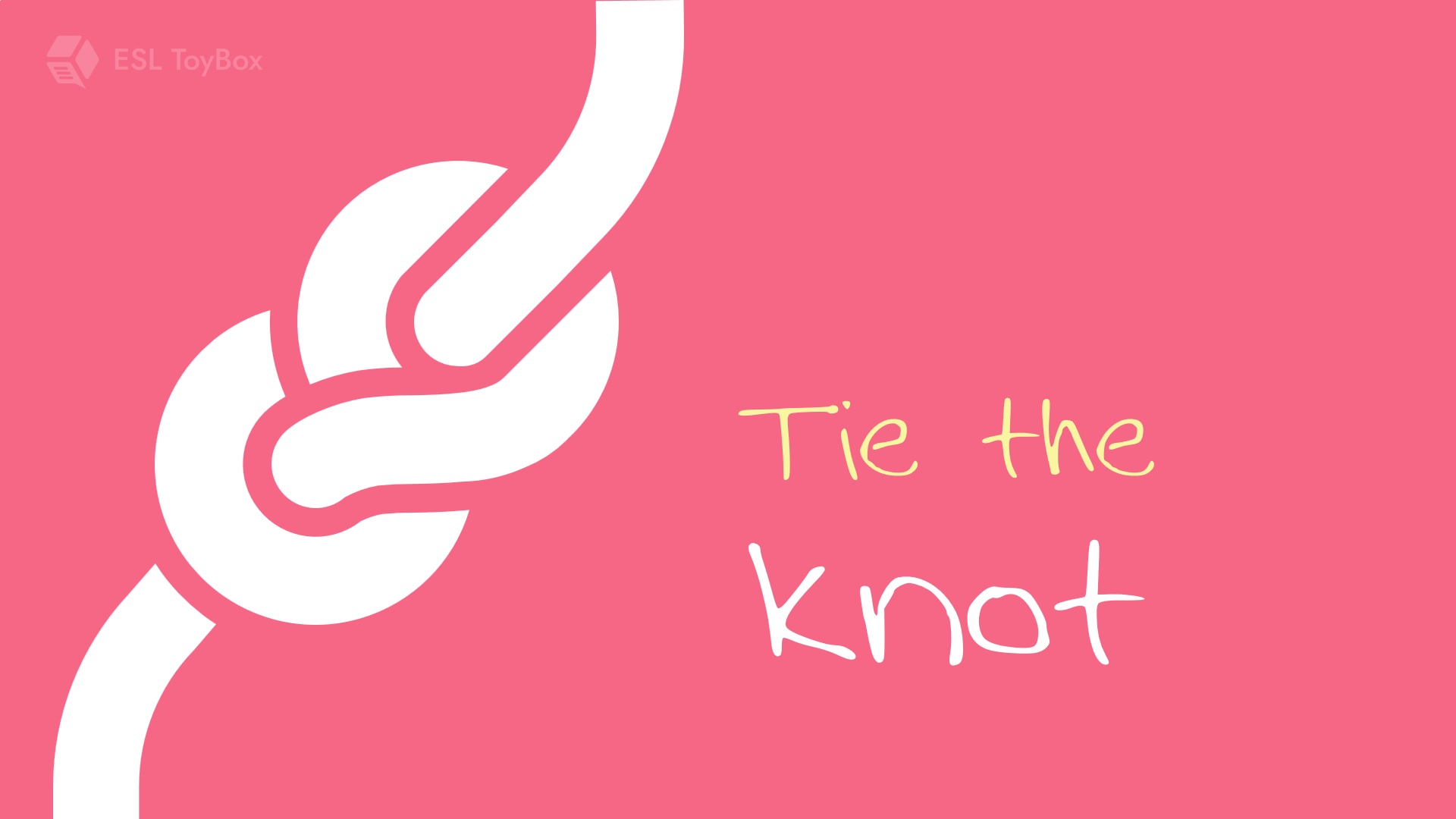Tie the Knot
Where is the Wedding Invitation?
I recently received a message from a former co-worker who told me that another former co-worker is going to tie the knot soon. I didn’t know she was even dating someone. She recently came back to my institute as a trainee and didn’t mention anything. But I am really happy for her. She complained about being single and lonely a lot. Congratulations Claire!

Meaning
Tie the knot means getting married. It is like taking two strings and connecting them together in a permanent way. A knot is a way of tying things together. Sometimes we use "knot" to describe something that cannot be untied. The idea with marriage is that you are connected to this person for the rest of your life and a knot is a good metaphor for that. Tie the knot is used informally as a light-hearted way of describing a wedding. You shouldn’t use it in formal situations.
Example: My wife and I tied the knot fifteen years ago.

Origin
There are a lot of traditions and ceremonies connected to weddings. For example, in a traditional Korean wedding, the bride wears red and the groom wears blue because of the confusion idea of yin and yang. Another interesting tradition is the presentation of the wild goose (전안례), a symbol of loyalty and commitment.
The tradition of tying the knot comes from Scotland and an ancient Celtic practice dating to the medieval era. It first appears in The Legend of St. Katherine (1225), “Swa ye cnotte is icnut bituhhen unc tweien” (Modern English translation: As we are fastened and tied together, so the knot is knitted between us two). However, it is believed that the practice is 9,000 years old. There is a myth that tying hands was the start of a year-long practice marriage. So, traditionally, tying the knot was like an engagement ceremony. However, it sounds like there is no evidence to support this.
During the tying of hands, they would literally tie cloth around the hands of the bride and groom. This practice is called handfasting and performed around the globe, but it is most famous in Scotland. People use cloth, sash, cord, or ribbon to tie the hands of the newly wed. For some people, a knot is tied for each vow (promise) made. After the ceremony, the couple can keep the bindings to remember the ceremony and their commitment to each other.

Something Old, Something New, Something Borrowed, Something Blue
There are a lot of traditions associated with wedding ceremonies with deep cultural roots. One of the more popular traditions in Western countries revolves around what the bride wears. As the rhyme goes, she must wear something that is old, new, borrowed, and something blue. Symbolically, something old represents the couples’ life before marriage. Something new is a symbol of the future together. They should also borrow something to bring good fortune to the marriage. The color blue represents faithfulness and love. Tell me about a wedding tradition you like.
See also: The shortest sentence, Over the moon, Love languages

For more English phrases and quotes, follow me on Facebook:
https://www.facebook.com/ESL-ToyBox-112152010890485
Resources:
https://www.brides.com/traditional-korean-wedding-5087200
https://www.wedaways.com/everything-you-need-to-know-about-korean-wedding-customs-traditions/
https://linguasia.com/korean-wedding-traditions
https://theculturetrip.com/europe/united-kingdom/scotland/articles/where-does-the-phrase-tie-the-knot-come-from/
https://www.theidioms.com/tie-the-knot/
https://literarydevices.net/tie-the-knot/
https://pamelamorrisbooks.com/2016/03/09/why-do-we-say-that-3/


